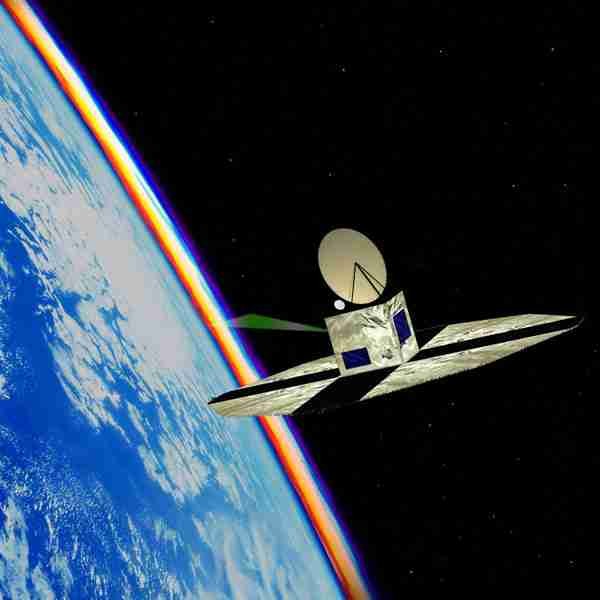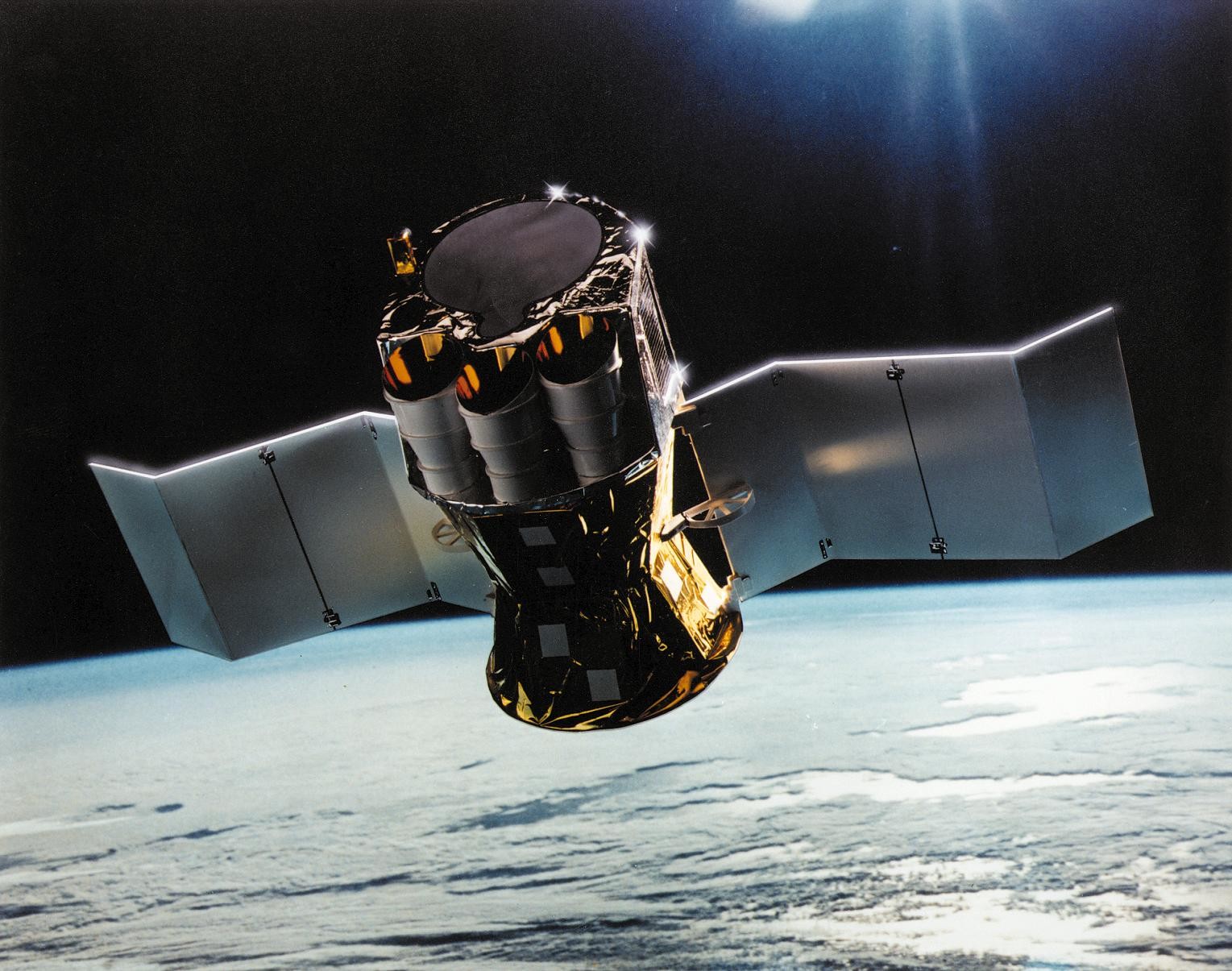After SWAS, the small Swedish satellite Odin was launched in 2001 by a partnership with Canada, Finland and France and still works in 2016. Odin brought a lot to cometary physics by observing water vapor in a dozen comets, and even detecting the H218O molecule, wherein the oxygen is replaced by a rare isotope.

Le satellite Odin
Crédit : Agence spatiale canadienneHerschel was a large satellite of the European Space Agency, with a 3.5-meter diameter radiotelescope for submillimeter waves. It was launched in 2009 and stopped working in 2013, when the liquid helium it contained was exhausted. With its high sensitivity, it could measure the amount of heavy water HDO issued by several comets, especially the comet 103P/Hartley 2, visited in 2010 by the U.S. probe EPOXI. It was thus possible to measure the ratio D/H between the abundance of deuterium, the heavy isotope of hydrogen and hydrogen itself.
The value of this ratio is related to the origin of water on Earth. The Earth passed through a phase where it was so hot that the water was completely evaporated, thus the water that is currently present had to be brought by comets or asteroids. The D/H ratios measured in different comets where this was possible comprised the terrestrial ratio (for Hartley 2) and twice this ratio, or even three times in the case of the comet “Chury” explored by Rosetta. Moreover, one could measure the D/H ratio in the water that is included in several asteroids and find that it is equal to the Earth’s. Are asteroids dominant in the supply of this precious liquid? This is all the more possible because Herschel has detected water vapor emitted by the biggest asteroid, Ceres, showing also that the boundary between asteroids and comets is not very clear. But the statistics are still low, and it is not yet possible to give a definitive answer to the question of the origin of Earth’s water.

Le satellite Herschel
Crédit : ESA / AOES Medialab ; arrière plan : Hubble Space Telescope, NASA/ ESA/ STScI